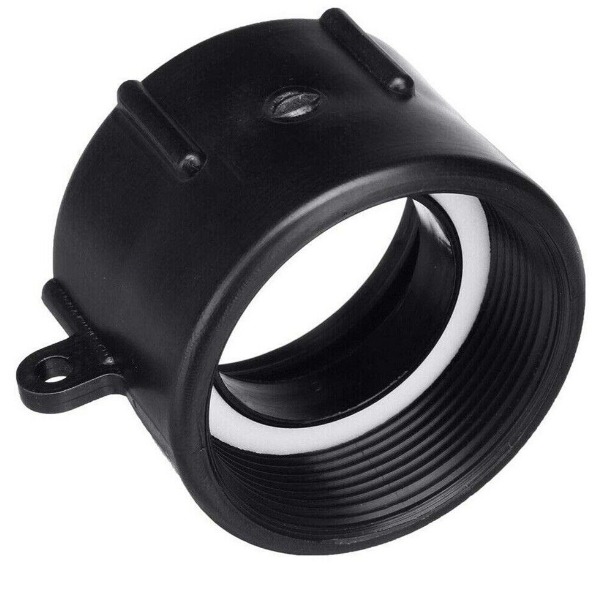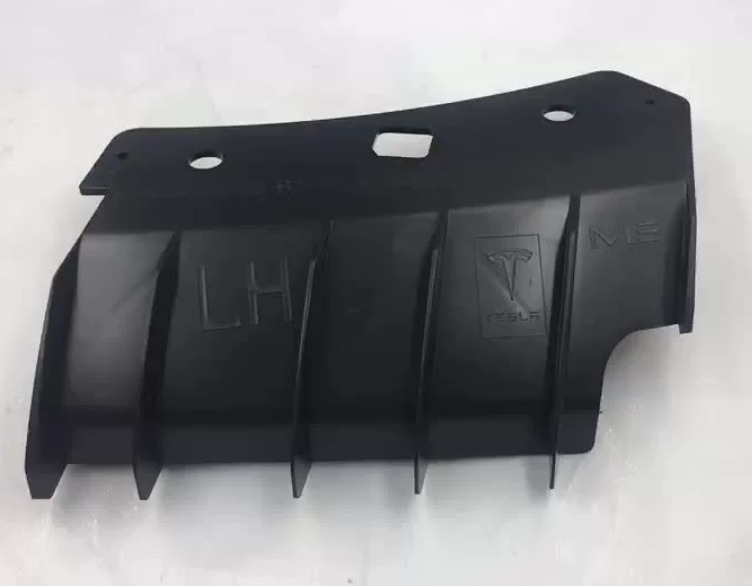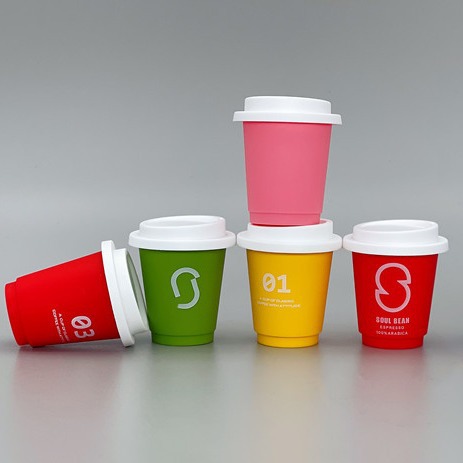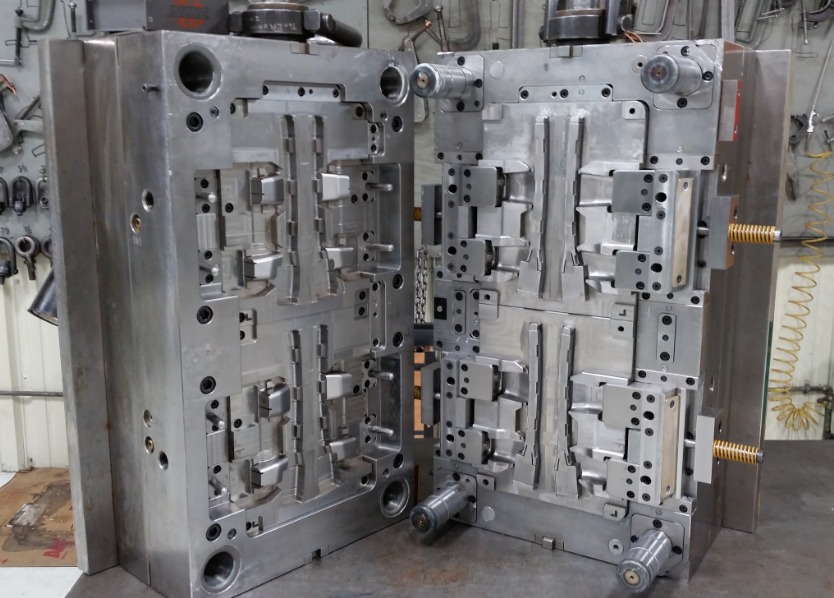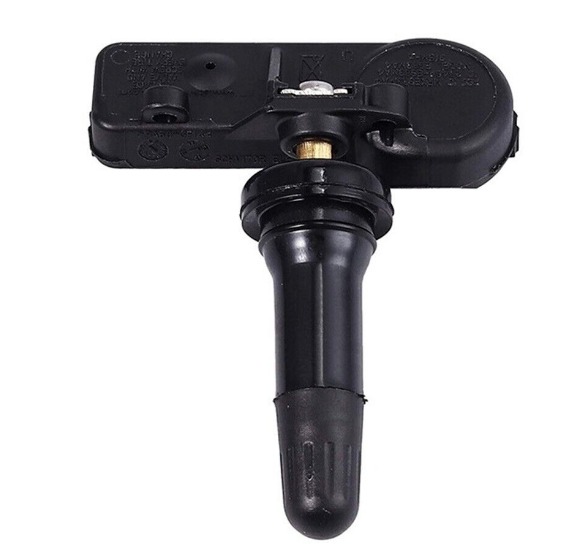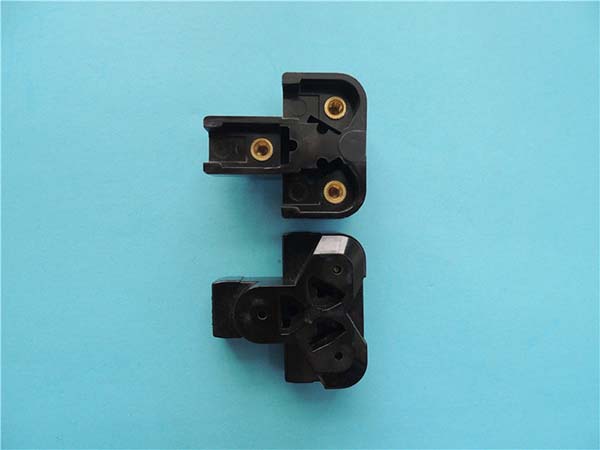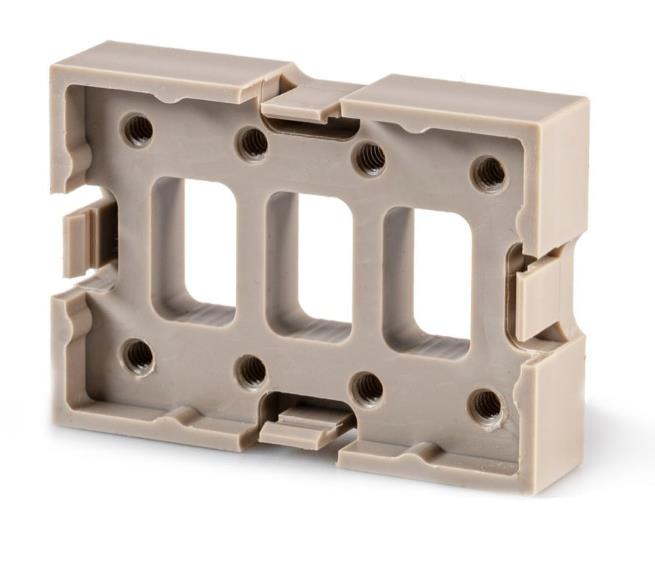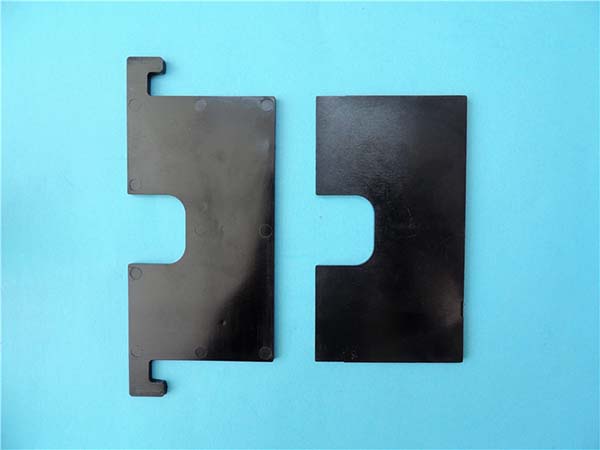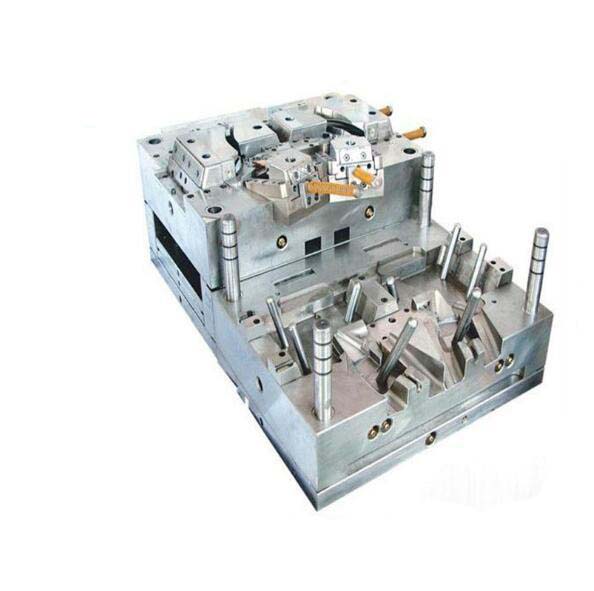What is Insert Molding
Definition and Basic Principle
Insert molding, also known as insert injection molding, is a specialized manufacturing process that combines the advantages of different materials to create complex and high - performance components. In this process, pre - prepared inserts, which can be made of metal, ceramic, or other materials, are placed into a mold cavity. Then, molten plastic is injected into the mold, surrounding the insert and bonding with it as it cools and solidifies. The result is a single, integrated part that combines the properties of the insert and the plastic.
The basic principle behind insert molding is centered around the concept of material integration. For example, metal inserts are often used for their high strength, electrical conductivity, or heat resistance, while plastics provide advantages such as lightweight construction, corrosion resistance, and design flexibility. By embedding the metal insert within the plastic, manufacturers can create parts that have the best of both worlds.
The process begins with the careful preparation of the inserts. These inserts are precisely machined to the required dimensions and may have features like threads, grooves, or specific geometries that enhance the bond with the plastic. Once prepared, they are accurately positioned within the mold cavity using fixtures or automated placement systems. This is a crucial step, as any misalignment of the insert can lead to defects in the final product.
Next, the injection molding machine injects the molten plastic into the mold. The plastic flows around the insert, filling every nook and cranny of the mold cavity. As the plastic cools down, it solidifies, firmly bonding with the insert. The cooling process is carefully controlled to ensure uniform solidification and prevent warping or stress concentrations in the part. Once the part is fully cooled, the mold opens, and the finished insert - molded component is ejected.
The Process of Insert Molding
Step - by - Step Procedure
- Insert Preparation:
- Before starting the insert molding process, the inserts need to be precisely prepared. If they are metal inserts, they may require machining operations such as turning, milling, or drilling to achieve the desired shape, size, and surface finish. For example, a metal insert with threaded holes for a connector component must have the threads accurately formed to ensure proper functionality later.
- The inserts should also be cleaned thoroughly to remove any contaminants like oil, dust, or debris. Even a small particle of dirt can disrupt the bond between the insert and the plastic during the molding process.
- Insert Placement in the Mold:
- There are two common methods for placing inserts in the mold: manual and automated. In manual placement, operators carefully position the inserts into the mold cavities. This method is often used for small - batch production or when dealing with complex - shaped inserts. However, it is time - consuming and has a higher risk of human error, such as misalignment of the insert.
- Automated placement systems, on the other hand, use robotics or mechanical devices to accurately position the inserts. These systems are faster and more accurate, making them suitable for high - volume production. For instance, a pick - and - place robot can quickly and precisely place multiple identical inserts into the mold cavities in a fraction of the time it would take a human operator.
- Injection of Molten Plastic:
- Once the inserts are in place, the injection molding machine is activated. The plastic material, usually in pellet form, is fed into the machine's hopper. From there, it enters the heated barrel where it is melted by the action of a rotating screw. The temperature in the barrel is carefully controlled to ensure that the plastic reaches the optimal viscosity for injection.
- The molten plastic is then forced through the nozzle of the injection unit and into the mold cavities through a runner system. The injection pressure is a critical parameter; it must be high enough to ensure that the plastic fills the entire mold cavity, including all the intricate details around the insert, but not so high that it causes the insert to move or the mold to be damaged.
- Cooling Phase:
- After the mold is filled with molten plastic, the cooling process begins. This is a crucial step as it determines the final shape and quality of the product. The mold is usually equipped with a cooling system, which can be water - cooled channels or air - cooling mechanisms.
- The cooling rate should be uniform across the entire part. Uneven cooling can lead to warping, internal stresses, and differences in the material properties of the plastic around the insert. For example, if one side of the mold cools much faster than the other, the plastic will solidify at different rates, causing the part to warp.
- Ejection of the Finished Part:
- Once the plastic has cooled and solidified sufficiently, the mold opens, and the finished insert - molded part is ejected. Ejection is typically achieved using ejector pins, which push the part out of the mold cavity.
- The ejected part may still have some flash (excess plastic that has leaked into the parting lines of the mold) or runner systems attached. These need to be trimmed off in a post - processing step to obtain the final product.
Process Variables and Their Impact
- Temperature:
- Barrel Temperature: The temperature of the barrel where the plastic is melted affects the viscosity of the plastic. If the barrel temperature is too low, the plastic may not melt completely, leading to uneven flow and potential voids in the final product. For example, in a polypropylene insert - molding process, if the barrel temperature is set below the recommended range, the polypropylene may not flow smoothly around the insert, causing incomplete filling of the mold cavity.
- Mold Temperature: A higher mold temperature can improve the surface finish of the plastic and enhance the bond between the plastic and the insert. However, it also increases the cooling time. In contrast, a lower mold temperature reduces the cooling time but may result in a poorer surface finish and increased internal stresses.
- Pressure:
- Injection Pressure: As mentioned earlier, injection pressure is crucial for filling the mold cavity. Insufficient injection pressure can cause short - shots (incomplete filling of the mold), while excessive pressure can cause flash, damage to the insert, or even damage to the mold. For a complex - shaped insert - molded part with thin - walled sections, a higher injection pressure may be required to ensure complete filling.
- Holding Pressure: After the mold is filled, a holding pressure is applied to compensate for the shrinkage of the plastic as it cools. If the holding pressure is too low, the part may have sink marks or internal voids.
- Time:
- Injection Time: This is the time taken to inject the molten plastic into the mold. A short injection time may not allow the plastic to flow evenly around the insert, especially in complex - shaped molds. On the other hand, a long injection time can lead to over - heating of the plastic and degradation of its properties.
- Cooling Time: As discussed, the cooling time affects the quality of the final product. A shorter cooling time may result in a part that is not fully solidified, leading to warping or deformation during ejection. A longer cooling time, while ensuring a better - quality part, can reduce the production efficiency.
Applications of Insert Molding
Insert molding finds extensive applications across various industries due to its ability to combine the properties of different materials and create high - performance components. Here are some of the key application areas:
In the Automotive Industry
In the automotive industry, insert molding is used in the manufacturing of a wide range of components. For engine parts, metal inserts are often used in plastic housings to enhance heat resistance and mechanical strength. For example, in the production of engine covers, metal inserts can be embedded in the plastic to provide additional support and ensure that the cover can withstand the high - temperature and high - vibration environment of the engine.
Interior components also benefit greatly from insert molding. Door handles, for instance, are often made using insert molding. A metal core can be inserted into the plastic molding to give the handle the necessary strength for repeated use while still allowing for a lightweight and aesthetically pleasing design. According to industry statistics, over 70% of modern car interior plastic components with functional requirements, such as those that need to support mechanical loads or have electrical conductivity, utilize insert molding technology. This process helps automotive manufacturers meet the strict safety, durability, and weight - reduction requirements of the industry. It also allows for the integration of multiple functions into a single component, reducing the number of parts and assembly steps, which in turn reduces production costs.
In the Electronics Sector
The electronics sector heavily relies on insert molding to achieve the miniaturization and multifunctionalization of products. In mobile phone manufacturing, insert molding is used for making the phone casings. Metal inserts can be incorporated into the plastic casing to improve the structural integrity of the phone, especially in areas around the camera module, buttons, and ports. This not only provides better protection for the internal components but also enables features like electromagnetic shielding.
Electronic connectors are another prime example. Insert molding allows for the precise placement of metal terminals within a plastic housing. These connectors need to have excellent electrical conductivity and mechanical stability. By using insert molding, manufacturers can ensure that the metal terminals are firmly held in place by the plastic, preventing any loose connections that could lead to signal interference or power failures. In fact, in high - speed data transfer connectors, insert molding has become the standard manufacturing process to guarantee reliable performance. The use of insert molding in electronics has increased significantly in recent years, with a growth rate of about 15% annually, driven by the continuous demand for smaller, more powerful, and reliable electronic devices.
In the Medical Field
In the medical field, insert molding is crucial for manufacturing various devices. Syringes, for example, often use insert molding to combine a plastic barrel with a metal or plastic plunger. The plunger, which may have a metal insert for better grip and durability, is precisely molded into the plastic barrel. This ensures a smooth and leak - free operation, which is essential for accurate dosing of medications.
Dental prosthetics like dentures also utilize insert molding. Metal inserts can be incorporated into the plastic base of the denture to improve its strength and fit in the mouth. This is especially important for long - term use and for ensuring patient comfort. Medical devices made using insert molding must meet strict quality and hygiene standards. The process allows for high - precision manufacturing, with tolerances often within the micron range, ensuring that each device functions as intended. Additionally, the materials used in insert molding for medical applications are carefully selected to be biocompatible and resistant to sterilization processes, such as autoclaving or chemical sterilization.
Yigu Technology's Perspective
As a non - standard plastic metal products custom Supplier, Yigu Technology has in - depth experience and expertise in insert molding. Our advanced equipment, including state - of - the - art injection molding machines and high - precision machining tools, enables us to handle a wide range of insert molding projects with precision.
Our professional team consists of skilled engineers and technicians who are well - versed in the insert molding process. They can provide comprehensive solutions, from the initial design phase to the final production, ensuring that every project meets the highest quality standards. We pay strict attention to quality control, implementing a series of inspection procedures at every stage of production, from insert preparation to the final product. This allows us to identify and resolve any potential issues promptly, guaranteeing the production of high - quality insert - molded components. Whether it's a small - batch customization or a large - scale production project, Yigu Technology is committed to providing customers with excellent services and innovative solutions to meet their unique needs in the field of insert molding.
FAQ
What are the common materials for inserts in Insert Molding?
Common insert materials include metals like brass, aluminum, and steel. Brass is popular due to its good corrosion - resistance, ease of machining, and moderate cost, often used in applications where electrical conductivity or decorative appearance is required. Aluminum is lightweight and has good heat - dissipation properties, making it suitable for parts in the electronics and automotive industries where weight reduction and heat management are crucial. Steel offers high strength and durability, ideal for components that need to withstand heavy loads or harsh environments.
Plastics can also be used as inserts, especially when compatibility with the over - molded plastic is a key factor. For example, some high - performance plastics like PEEK (Polyether - ether - ketone) can be used as inserts in applications that require high - temperature resistance and chemical stability.
Ceramics are another option, valued for their high hardness, wear - resistance, and high - temperature resistance. They are often used in specialized applications such as in the aerospace or high - precision mechanical industries. The choice of insert material depends on factors like the required mechanical properties (strength, hardness, etc.), thermal properties (thermal expansion coefficient, heat resistance), chemical resistance, and cost.
How to solve the problem of insert displacement during the Insert Molding process?
To solve the problem of insert displacement during insert molding, several approaches can be taken. First, optimize the mold design. Design special 定位 features in the mold, such as precision - machined cavities or grooves that closely match the shape of the insert, to ensure accurate positioning. For example, if the insert is cylindrical, a precisely - sized circular cavity in the mold can prevent it from moving during injection.
Second, improve the insert fixation method. Use mechanical fixation methods like clips, tabs, or undercuts on the insert to lock it in place within the mold. For small inserts, adhesives can also be used sparingly to temporarily hold the insert in position, but care must be taken to ensure the adhesive does not affect the bonding between the insert and the plastic.
Finally, adjust the injection parameters. Reduce the injection speed and pressure to minimize the force exerted on the insert during plastic injection. A slower injection speed allows the plastic to flow more gently around the insert, reducing the risk of displacement. Additionally, proper venting of the mold can help to evenly distribute the pressure and prevent uneven forces from acting on the insert.
